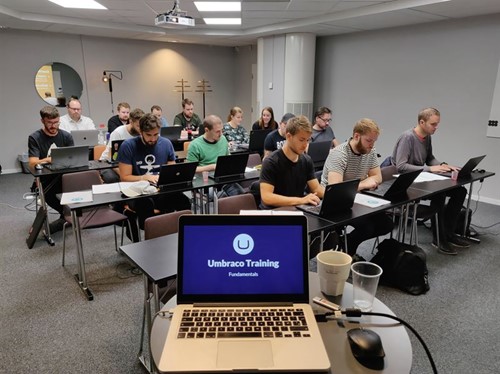What is this new course exactly about?
Taking the Umbraco Load Balancing Course, you will learn how to scale Umbraco to the max and join the elite group of Umbracians who are not terrified when a client asks for load balancing.
The course covers the fundamentals of why you would need to load balance a website, how to configure Umbraco for load balancing, issues to watch out for, and advanced techniques including how to write load balancing aware code.
The training is split into two “chapters”:
- The first chapter is all about infrastructure agnostic (doesn’t matter where it’s hosted) load balancing practices. This will cover topics such as basic configuration, synchronized vs. non-synchronized file systems, server registries and database server messenger options.
- The second chapter is more Microsoft Azure specific. It will cover how to deploy Umbraco to Azure Web Apps (Scale Out ready), Redis for Session State, Output caching, Azure Storage Blobs for media storage, Azure Application Insights, and Accessing Temporary files.
What are the benefits of Load Balancing?
First, it’s important to know what load balancing actually is. A load balancer distributes inbound traffic between two or more servers. There are a couple of reasons this could be a massive benefit for you and your clients.
For starters it allows the workload of a website to be split between two or more servers. This means that you or your client’s website will be able to handle more inbound traffic than a single server. Imagine a high demand site such as a concert or event and having the release of ticket sales at a certain time. The website would be heavily loaded at that specific time, which makes it a great time to have load balancing configured.
The second reason comes down to dependability. To have server redundancy for failure or maintenance, meaning higher uptime for your website (ideally 100%). If the website you are working with requires the highest level of uptime, load balancing will give you the peace of mind that if all goes wrong you have a redundant server running your site!

Who is this course for?
The target audience for this course is Umbraco Developers & Operations Engineers.
What will this course give you?
By the end of this course, you will have a good understanding of how to load balance Umbraco and the strategies you need to have in place when developing a codebase that needs to be able to scale across multiple servers.
You will also be confident that you can deploy an Umbraco based application to the Azure Cloud and that it will be correctly configured and stable.
The course covers:
As mentioned previously, the Load Balancing course consists of two main chapters. Here you can see a more detailed description of what they include:
Chapter 1:
- Configuration for load balancing Umbraco
- Non-synchronised and synchronised configurations
- How to develop and test a load balanced Umbraco application locally
- How to use SQL Server Session State
- How to develop code for cache events
- How to control and configure different Umbraco server roles
Chapter 2:
- Umbraco configuration for Azure Web Apps
- How to use Azure Redis for Session State
- How to use WebDeploy to deploy Umbraco to Azure Web Apps
- Using Azure Storage Blobs for Media
- Using Application Insights with Umbraco
What do you need to be ready for it?
You will need experience of developing ASP.NET MVC applications with Umbraco and have a general understanding of load balancing concepts.
You will also need to know how to use Visual Studio. Finally, being familiar with the Azure portal would be beneficial as well.
Make sure to check out other Umbraco courses that might help you gain the knowledge you need and a good start to be ready to take the new course.
And when ready, go ahead and book the Umbraco Load Balancing course.
How did others like the course?
We can tell you a lot about how useful the Load Balancing course can be… But perhaps it’s best if you hear it from the very first group of Umbraco Load Balancing Certified Developers:





